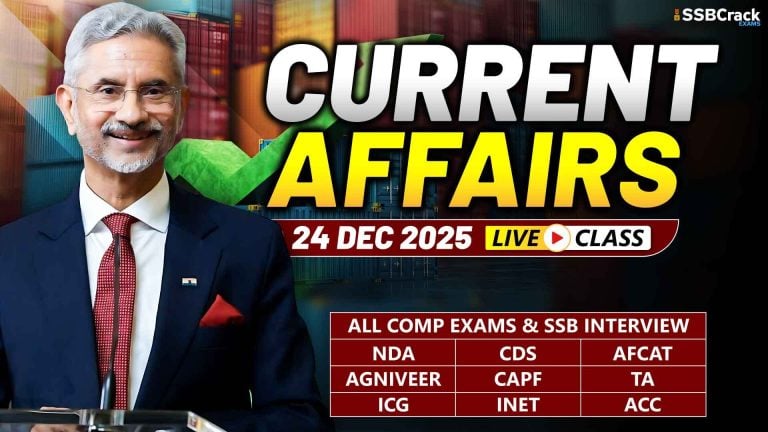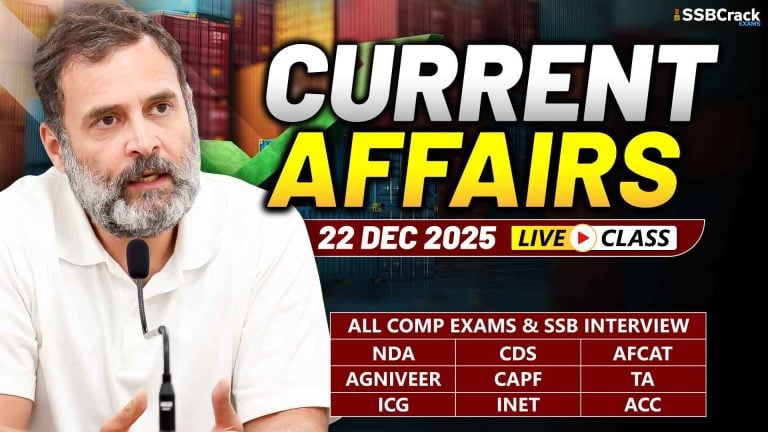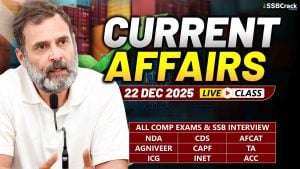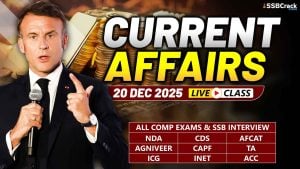Aurora lights in red hues were visible from Ladakh’s pristine skies late at night, in the intervening hours between Friday and Saturday. Astronomers of the Indian Institute of Astrophysics, Bengaluru (IIA) captured the auroras through all-sky cameras positioned around the Indian Astronomical Observatory (IAO) in Hanle, Ladakh.
Aurora Lights In India
Why In News
- Aurora lights in red hues were visible from Ladakh’s pristine skies late at night, in the intervening hours between Friday and Saturday. Astronomers of the Indian Institute of Astrophysics, Bengaluru (IIA) captured the auroras through all-sky cameras positioned around the Indian Astronomical Observatory (IAO) in Hanle, Ladakh.
- Owned and operated by the IIA, IAO is equipped with these cameras capable of constantly imaging the sky. It showed that space activity persisted between midnight and the twilight hours of Saturday, with the peak activity reported at 2 am on Saturday.
- These lights, called auroras, are usually seen in high-latitude regions (when measured from the equator), namely the North and the South Pole. When witnessed near the North they are called Aurora Borealis, while those in the South are called Aurora Australis.
What Are Auroras
- Auroras are bright and colourful lights, formed due to an active interaction in Space between charged solar winds and the Earth’s magnetosphere. Solar winds are ejections of charged particles from the Sun’s atmosphere, mostly composed of protons and electrons.
- The magnetosphere is the region surrounding the Earth where the dominant magnetic field is the Earth’s, rather than the magnetic field of interplanetary Space, according to the US National Oceanic and Atmospheric Administration (NOAA). It protects the Earth against solar winds and is strongest at the poles.
- However, sometimes solar wind particles flow down the Earth’s magnetic field. Auroras are produced when these particles collide with atoms and molecules in the Earth’s upper atmosphere. The collisions produce light, “much like how electrons flowing through gas in a neon light collide with neon and other gasses to produce different colored light bulbs,” the NOAA website says.
Why Were Auroras Visible From Ladakh
- It has to do with heightened solar flare activity in Space. Solar physicists at the Centre of Excellence in Space Science India, at the Indian Institutes of Science Education and Research (IISER) Kolkata, said that at least four strong solar storms arrived over Earth between Friday and Saturday.
- The source of these storms was Coronal Mass Ejections (CMEs), which are large ejections of magnetic particles and plasma from the Sun’s corona – the outermost part of its atmosphere. These CMEs emerged from AR13664, currently an active region on the Sun, on May 8.
- Travelling at 700km/second, the Earth-bound CMEs reached the closest to the Earth’s atmosphere on May 10 and 11, disturbing the otherwise calm Space weather. Solar flares travelling at a speed of 815km/second were recorded when they hit the Earth.
- According to Indian solar physicists, the intensity of these incoming solar storms was much higher than average.
- One of the manifestations of the solar storm’s interactions with the Earth’s atmosphere was the emergence of auroras in red, violet and blue colours. So strong were the storms that the aurora lights were visible from many lower-latitude regions. The auroras were also visible in parts of the US and the UK.
How Hazardous Are Solar Storms
- Intense solar storms can be harmful as they can interfere with and threaten the smooth operations of satellites operating in the Low Earth Orbit or LEO (an altitude ranging between 200-1,600km).
- The most common satellites functioning from the LEO are used for multiple purposes, such as navigation, military, intelligence, communications, etc. Thus, Earth’s satellite-based GPS, navigation systems, etc. could be vulnerable to solar storms.
- The highly energetic particle environment created by these solar storms can also induce heating in the upper atmosphere. This increases the risk of radiation hazards, causing a drag effect on satellites positioned at LEO.
- An excessive drag can mean satellites facing intolerable amounts of friction, which in extreme cases can ignite and burn down the satellites, ceasing their operations completely.
- 20th ASEAN-India Summit & 18th East Asia Summit Highlights
- Manipur Police Register Criminal Case Against Assam Rifles
- Pakistan’s Ex-PM Imran Khan Jailed For 3 Years In ‘Toshakhana Case’
- Four Years After Removal Of Art 370: How Is The Actual Situation In Kashmir?
- Putin’s Critic Alexei Navalny Sentenced To 19 More Years In Prison
- Delhi Services Bill Tabled In Lok Sabha: Govt Of NCT Of Delhi (Amendment) Act, 2023
- Gurugram Nuh Violence: How A Religious Procession Turned Into A Communal Clash
- Govt Imposes Import Restrictions On Laptops, Tablets, Computers
- How Climate Change Is Altering The Colour Of The Oceans?
- New IPCC Assessment Cycle Begins: Why Is It So Significant?
- Difference Between NATO Vs Russia? [Explained]
- Italy Regrets Joining China Belt & Road Initiative (BRI)
- What Is Doping: Why Is It Banned In Sports?
- India Tiger Census 2023: India Is Now Home To 75% Of Tigers In The World
- Military Coup In Niger – President Detained, All Institutions Suspended
- No-Confidence Motion Against PM Modi’s Government
- Elon Musk’s SpaceX Rocket Punches Hole In Ionosphere
- Israeli Parliament Passes Controversial Law Stripping Supreme Court Of Power
- Significance Of 1999 Kargil War: How It Became A Major Game Changer For Indian Military?
- Controversy Over Movie Oppenheimer Gita Scene: How Are Films Certified In India?
- The Curious Case Of Qin Gang: China’s Foreign Minister Who Went Missing
- Twitter’s Iconic Blue Bird Logo Set To Be Replaced By An X Logo
- India Pulls Out Of Games In China Over Stapled Visas For Arunachal Athletes
- PM Modi Urges Sri Lanka President To Implement 13th Amendment
- India Pulls Out Of Games In China Over Stapled Visas For Arunachal Athletes
- Rajasthan CM Sacks Minister After Remarks Over Crimes Against Rajasthan Women
- Manipur Sexual Assault: Video Sparks Outrage Across The Country
- BRICS Summit 2023 In August: Why Putin Won’t Go To South Africa For The Summit?
- Robert Oppenheimer: The Father Of Atomic Bomb, Impact Of Bhagavad Gita On Him
- Russia-Ukraine Black Sea Grain Deal, Why Russia Has Halted It?
- Henley Passport Index 2023, India Passport Ranked 80th
- Indian Opposition Parties Form ‘INDIA’ Alliance, 26 Parties Unite For 2024
- Britain Joins Asia-Pacific Trade Group ‘CPTPP’ – Biggest Trade Deal Since UK Left EU
- NITI Aayog Report On National Multidimensional Poverty Index
- PM Modi UAE Visit: Highlights & Key Takeaways
- PM Modi’s Visit To France: Highlights & Key Takeaways
- NATO Summit Vilnius 2023: Highlights & Key Takeaways
- Turkey Supports Sweden’s Bid For NATO Membership At Vilnius Summit 2023
- Why ISRO Wants To Explore The Moon’s South Pole: Chandrayaan-3 Mission
- Bengal’s Panchayat Polls Turned Violent: SSB Interview Topic 2023
- First Ever IIT Campus Outside India In Tanzania
- RBI’s Report On “Internationalisation Of Rupee” Why And What Are The Benefits?
- Japan To Release Nuclear Wastewater Into Ocean – Gets Approval From IAEA
- PM Modi Chairs 23rd SCO Summit: Highlights & Key Takeaways
- Israel Raids Jenin Camp: Massive Military Operation In West Bank
- Dutch King Apologizes For Netherlands’ Role In Slavery: A Look At The Dutch Role In History
- Constitutional Crisis In Tamil Nadu: The Tussle Between Governor & DMK Government
- Why Has France Been Engulfed By Protests Again?
- Paris Summit – World Leaders Unite For A New Global Financing Pact
- India Ranked 67th On Energy Transition Index – Sweden On Top Of List By World Economic Forum
- Four Minor Planets Named After Indian Scientists
- NASA Recovers 98% Water From Urine & Sweat On ISS: Breakthrough In Long Space Missions
- ESA Space Telescope Euclid Is All Set For Launch To Observe Dark Side Of Universe
- PM Modi’s Trip To USA: Key Takeaways & Highlights
- PM Modi-Led Yoga Session Creates A New Guinness World Record
- Sajid Mir, The Mastermind Behind 26/11 – His Designation As Global Terrorist Blocked By China
- UN Adopts First Historic ‘High Seas Treaty’ To Protect Marine Life
- International Yoga Day 2023 – How It Was Celebrated Across The World?
- Gender Apartheid – Why Is Afghanistan At Stand Off With UN?
- Gandhi Peace Prize 2021 For Gita Press Why It Triggered A Congress-BJP Brawl?
- The New Pride Flag – Why The Change & What The Colours Signify?
- 48 Years Of Emergency – PM Modi Refers It As India’s Darkest Period In Mann Ki Baat
- Groundwater Extraction Has Tilted Earth’s Spin – How Will It Impact The Climate Change?
- Europe’s Worst Migrant Boat Disaster – 78 Dead, Hundreds Missing Off Greek Coast
- MOVEit Global Hacking Attack – Government Agencies In The USA Targeted
- Karnataka Govt Decides To Repeal Anti-Conversion Law: Why Was The Law Controversial?
- IIT Bombay Among Top 150 Varsities In QS Rankings 2024
- China’s Xi Jinping Backs ‘Just Cause’ Of Palestinian Statehood – Chinese Middle Eastern Diplomacy
- Turkey Won’t Back Sweden’s Bid To Join NATO – Why Is Erdogan Against Sweden’s Application
- UN Report Reveals Chronic Bias Against Women – 25% Of Population Thinks Beating Wife Justifiable
- Zinnai – Space Flower Grown On International Space Station By NASA – Why Is It Significant?
- Who Are Meira Paibis: Manipur’s ‘Torch-Bearing’ Women Activists?
- USA Set To Re-Join UN Cultural Agency UNESCO























